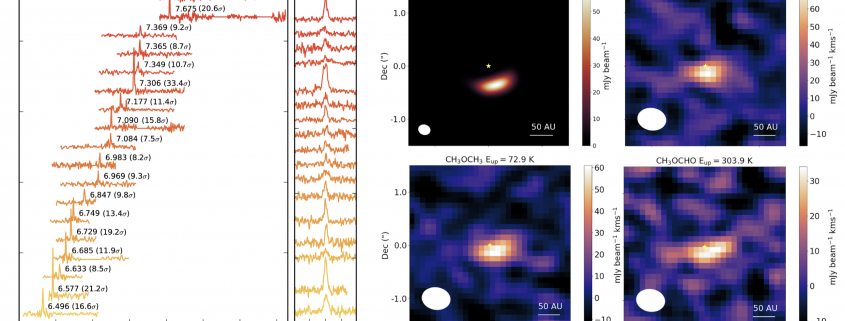ALMA probes atoms and molecules, near and far
ALMA’s supreme capabilities to detect spectral lines across the Universe are beautifully illustrated in two recently published papers by astronomers in the Netherlands. Bouwens et al. (2022, ApJ 931, 160) give an overview of the design and results of the ALMA Large Program REBELS. Using an efficient selection scheme, REBELS detects no less than 18 star-forming galaxies with bright [CII] 158 µm ISM cooling lines, out of a sample of 40 z>6.5 systems. This makes ALMA [CII] searches as efficient as Lyα to find high-redshift star-forming galaxies. Brunken et al. (2022, A&A 659, A29) stay closer to home and detect Complex Organic Molecules (COMs) in the highly asymmetric planet-forming disk around the young star IRS48. The disk around this star has a very pronounced ‘dust and ice trap’ where material accumulates, and future planet(esimals) may form. Brunken et al. report the first detection of dimethyl ether (CH3OCH3) vapor in a planet-forming disk, and a tentative detection of methyl formate (CH3OCHO) vapor. The presence of these molecules shows that a wide variety of oxygen-carrying COMs are present in the birth environment of planets. As these two papers show, wherever ALMA turns its ‘eye’, atoms and molecules leap out at us.



